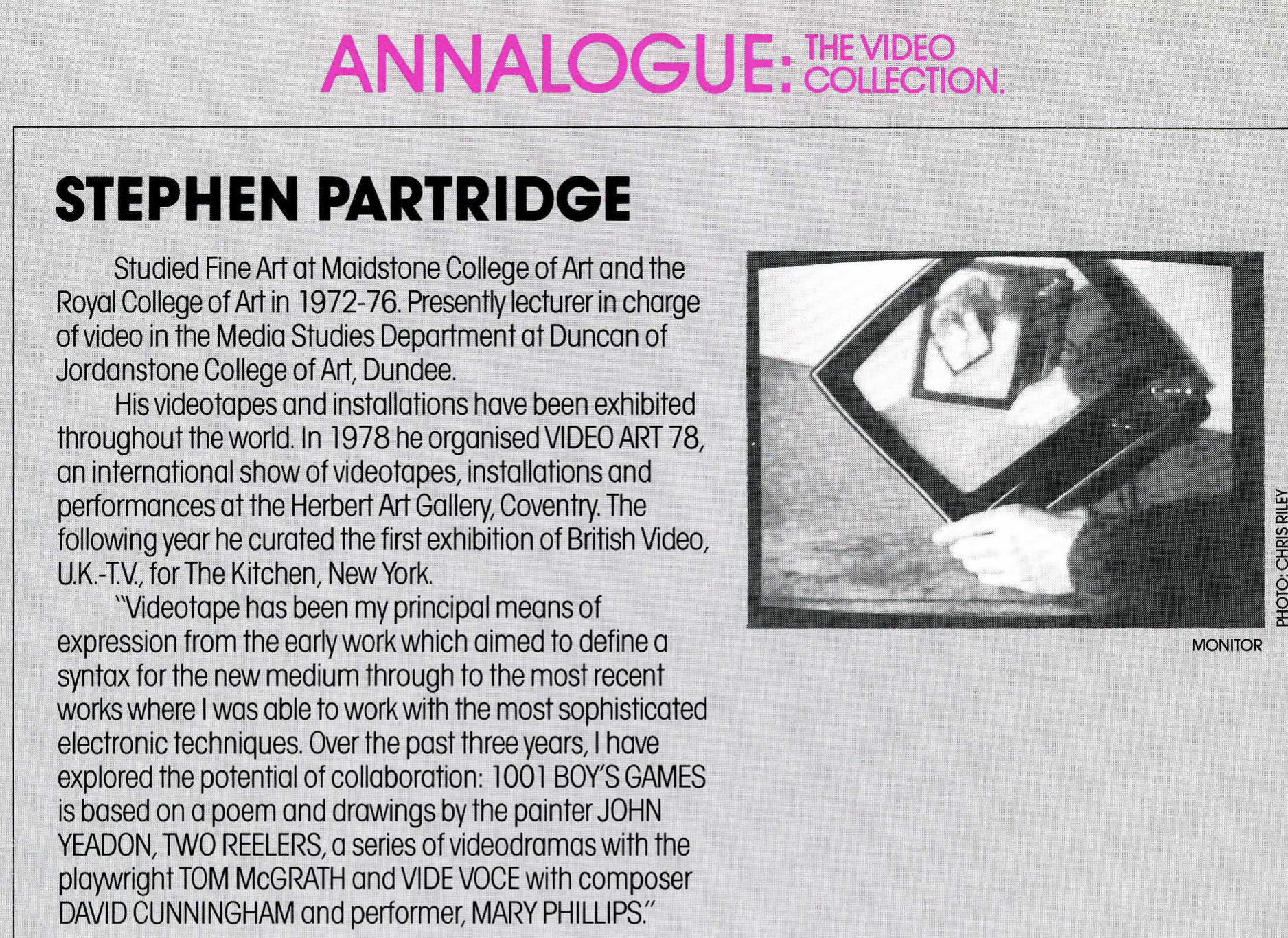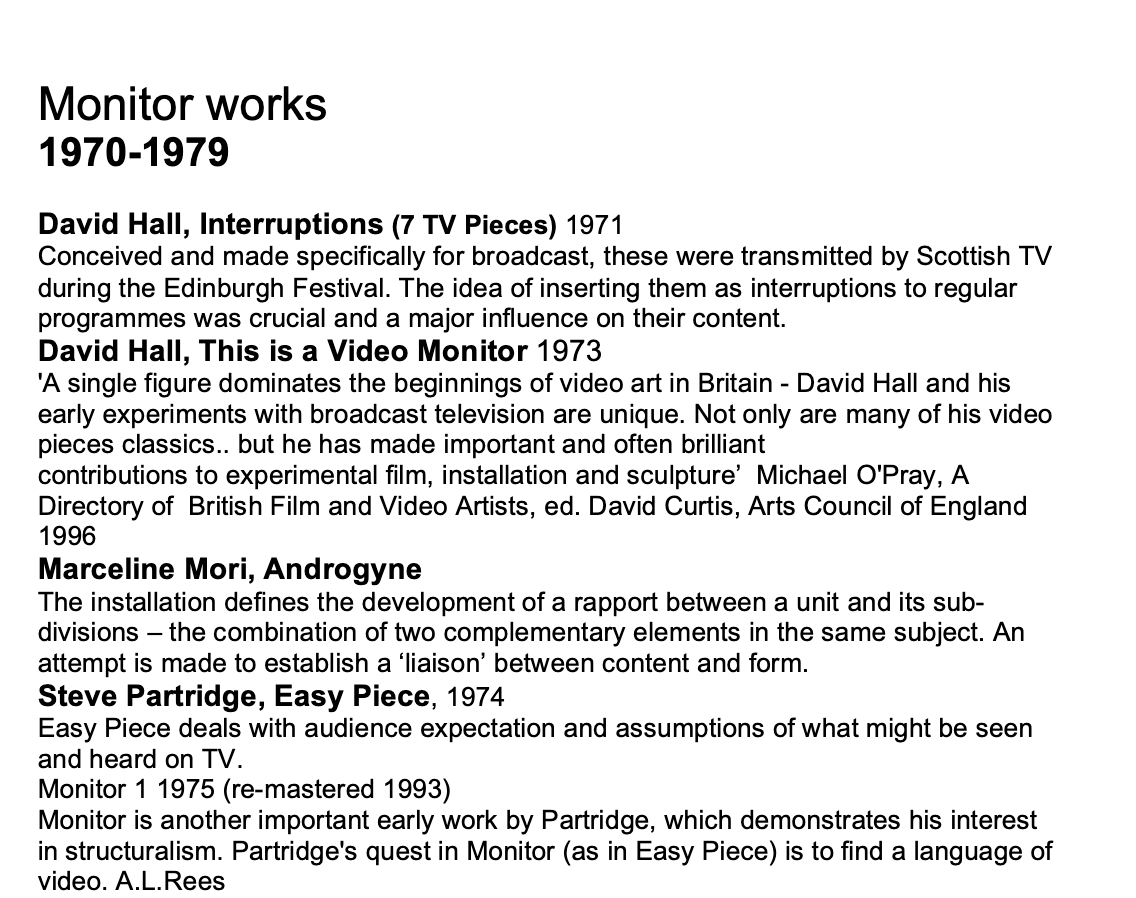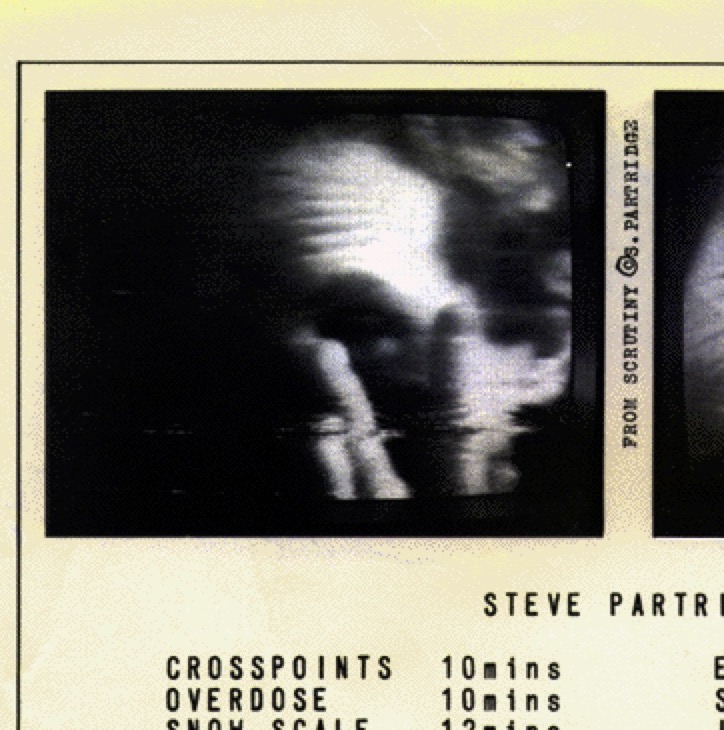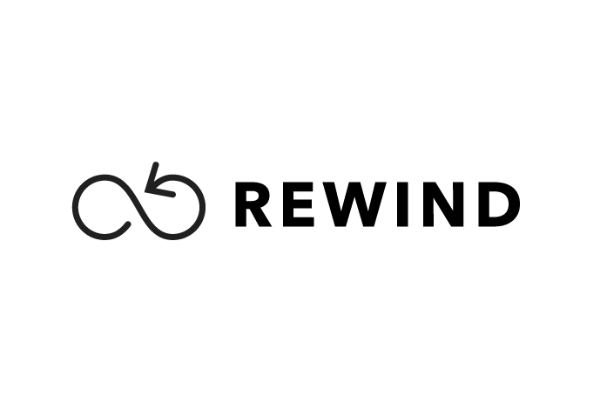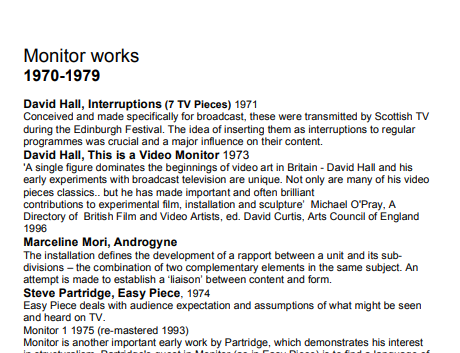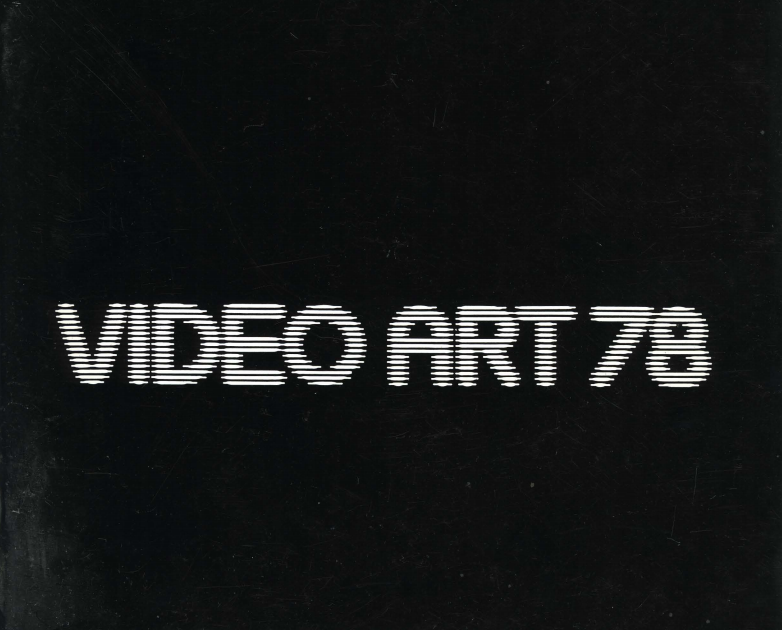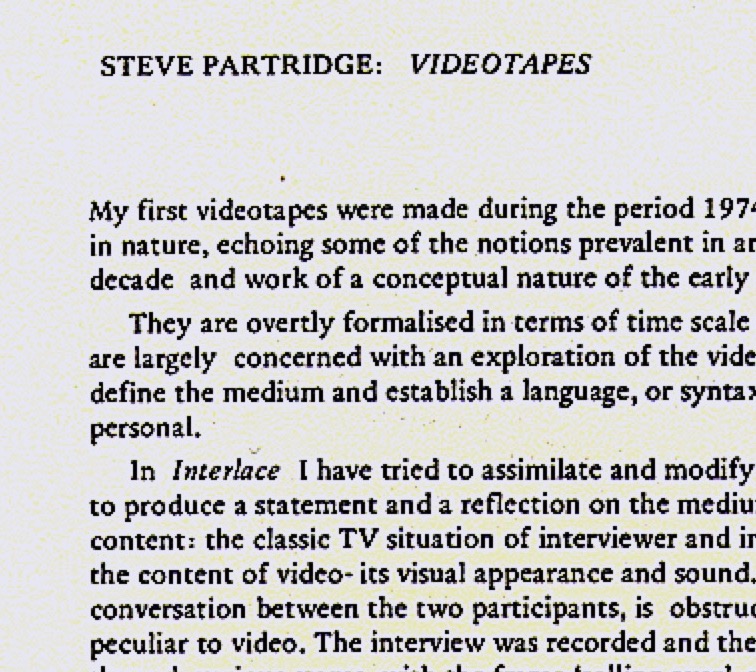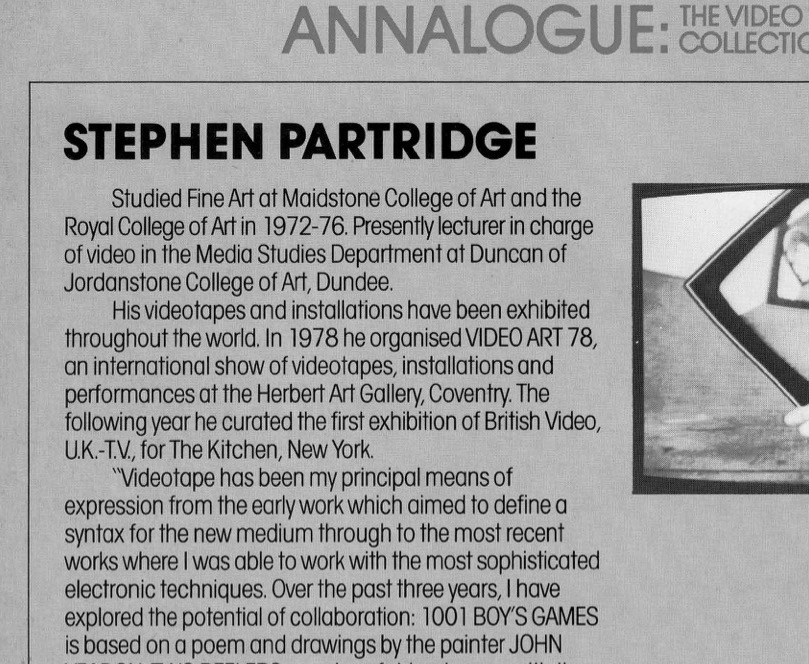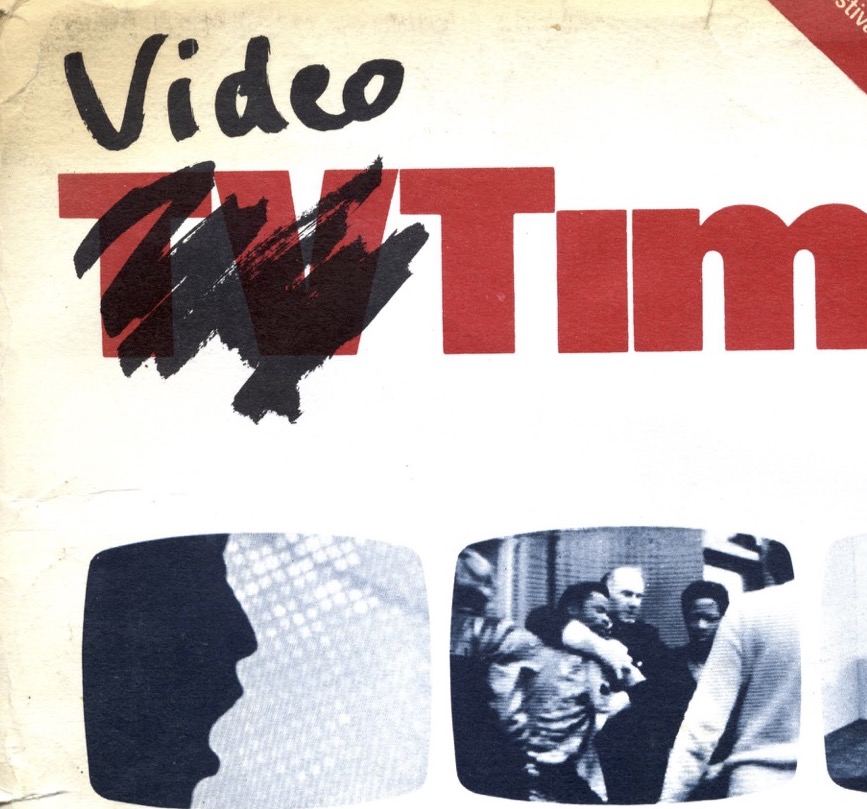Easy Piece (1974)
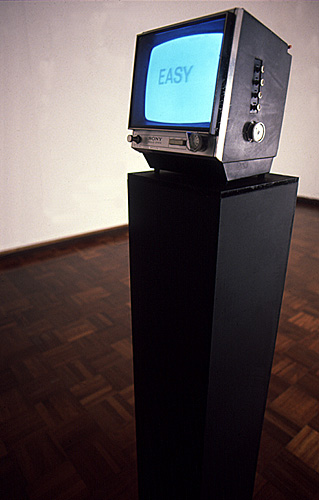
Creator:
Partridge, Stephen-
This work is part of the rewind archive.
Duration: 5.45 Minutes
Year: 1974 (1990 as installation)
Original formats:1/2 inch EIAJ reel-to-reel
Media types:Video
Type of work:Conceived as an Installation but not shown as such until 1996 at the Showroom London
Funding source: Self
First exhibited: The Video Show, Serpentine Gallery 1975
Technical details: Remastered 1979, 1990, 1993. Now shown as installation cyclical 30 minute work. Black & white videotape for 9" Sony International TV/Monitor and plinth.
‘Easy Piece was originally intended to be shown as an installation but it was not until 1996 that I actually got around to showing in that form.’ Stephen Partridge
“Partridge’s first works, which still hold good today, and continue to inspire new generations who see them, were essentially performance pieces. This was before the age of edit-suites, when crude splicing was the only option to straight duration and when all video-pictures were grey and visibly ‘degraded’. The image-word pulsing of Easy Piece, 1974, was made by fading in and out the key word of its title – ‘Easy’ – spoken on the soundtrack by a woman’s voice. Again, video’s real-time recording and instant playback – which most evidently made it not film – impelled the still stunning manipulations of Monitor, 1975, with its deep regress of angled tv’s in a sequence of chinese boxes, frames within frames. This was live art underscored by basic playback. Like much of the work to come, both pieces assert their modernist origins. The flat picture-plane of Easy Piece, with its printed word as visual icon, telescopes a fifty-year history from cubism and abstract art to postwar dada. ” –
Al Rees from Stephen Partridge, catalogue, Univ of Dundee, 1998, MONITORING PARTRIDGE, Al Rees, ISBN 1 899837 29 9
‘”My first videotapes”, Partridge wrote in 1979, “are ‘structuralist’ in nature, echoing some of the notions prevalent in artists’ films over the past decade, and work of a conceptual nature of the early seventies. They are largely concerned with an exploration of the video process, and attempt to define the medium and establish a language, or syntax, both universal and personal.
Easy Piece is a very minimal work which confronts the spectators’ expectations of visual information. The screen is blank for most of the time but is interrupted at precise intervals by the image of the word ‘easy’, which is heard spoken in a rather sensuous tone. After a few minutes the word is expected and awaited even though its ambiguity becomes irritating and meaningless, contrary to its definition.
The ‘structuralist’ aspect which Partridge mentions above is a reference to Easy Piece’s self-referentiality – the fact that it takes the medium of video itself as its primary subject matter, rather than trying to capture nature, tell a story, or illustrate an emotion. Partridge achieves this by a variety of means. The static camera, for instance, draws attention to itself by the artificiality of its unblinking immobility, so unlike the familiar operations of television and film cameras – or the human eye, for that matter. The same effect is further emphasised by the apparently random zoom action of the lens – which, at the same time, is the only visual ‘incident’ throughout the whole tape. The fact that the entire sequence has been captured in one uninterrupted shot – along with the simultaneous recording of the soundtrack – is another way of drawing our attention to the technical and ‘material’ aspect of the piece. This takes on an added significance once we realise that the early reel-to-reel machines with which Partridge had to work made editing a near impossibility. (It is also, incidentally, typical of many of Andy Warhol’s films of the 1960s, such as Empire (1964) and Sleep (1963), indicating Partridge’s relation to wider artistic developments.)
The initial simplicity of Easy Piece (its “minimal” appearance), thus subtly disguises a great deal of complexity. This complexity even extends to its relation to other visual art forms. Its emphasis upon rectangularity, for example (the rectangularity of the monitor screen, repeated by the sheet upon which the word ‘easy’ is written), combined with its flat, two-dimensional appearance, make the experience of looking at the work closer to the experience of looking at a painting (especially a ‘minimalist’ painting) than looking at a film or a television programme. This is not to say that looking at Easy Piece is the same as looking at a painting – far from it – but it is to suggest that some of the impact of the video is generated by the tension which arises from our recognition of its similarities to and its differences from painting. It is as if such a video can share some of the qualities of painting but also add new dimensions – such as duration and language, both written and spoken.
Similar things might be said of its relation to sculpture. When we confront Easy Piece in the gallery, we are not simply looking at an image made of flickering light, but at a very specific physical (i.e. sculptural) presence, comprising a plinth supporting a video monitor of specific style and dimensions. In fact, these physical aspects are so integral to the work that Partridge insists that the monitor is a 1970s Sony model, the one for which the video was originally intended. (The actual tape in this exhibition is a 1990 remake of the 1974 original. Partridge’s interest in ‘faking’ the look of the original is typical of his interest in playing with time. The replacement also reminds us that video tape doesn’t only represent time in an artistic sense, it also suffers the ravages of real time, rapidly decaying unless carefully treated.) The placement of the work within the gallery space further accentuates its sculptural character, making us realise that Easy Piece isn’t to be mistaken for a TV programme, but is to be approached as a new kind of artistic experience, one which lies somewhere between film, television, painting and sculpture.’ John Calcutt 1998, Interpretation for Exhibition at DJCAD, Street Level Glasgow.
-



